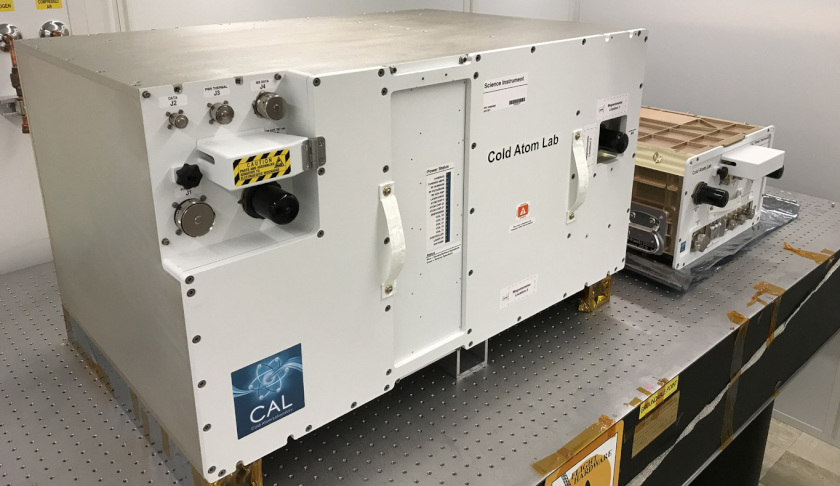
Seven months after its 21 May 2018 launch to the space station from NASA's Wallops Flight Facility in Virginia, CAL is producing ultra-cold atoms daily. Five teams of scientists will carry out experiments on CAL during its first year, and three experiments are already underway.
Room-temperature atoms typically zip around like hyperactive hummingbirds, but ultra-cold atoms move much slower than even a snail. Specifics vary, but ultra-cold atoms can be more than 200,000 times slower than room-temperature atoms.
This opens up new ways to study atoms as well as new ways to use them for investigations of other physical phenomena. CAL's primary science objective is to conduct fundamental physics research – to try to understand the workings of nature at the most fundamental levels.
Rob Thompson, a cold atom physicist at NASA's Jet Propulsion Laboratory in Pasadena, California, and the mission scientist for CAL, said, "With CAL we're starting to get a really thorough understanding of how the atoms behave in micro-gravity, how to manipulate them, how the system is different than the ones we use on Earth. This is all knowledge that is going to build a foundation for what I hope is a long future of cold atom science in space."
Laboratories on Earth can produce ultra-cold atoms, but on the ground, gravity pulls on the chilled atom clouds and they fall quickly, giving scientists only fractions of a second to observe them.
Magnetic fields can be used to 'trap' the atoms and hold them still, but that restricts their natural movement. In micro-gravity, the cold atom clouds float for much longer, giving scientists an extended view of their behaviour.
The process to create the cold atom clouds starts with lasers that begin to lower the temperature by slowing the atoms down. Radio waves cut away the warmest members of the group, further lowering the average temperature.
Finally, the atoms are released from a magnetic trap and allowed to expand. This causes a drop in pressure that, in turn, naturally causes another drop in the cloud's temperature (the same phenomenon that causes a can of compressed air to feel cold after use).
Robert Shotwell, chief engineer for JPL's Astronomy, Physics and Space Technology Directorate and CAL project manager, said, "Several parts of the system required redesigning, and some parts broke in ways we'd never seen before. The facility had to be completely torn apart and reassembled three times."
In space, the cloud has longer to expand and thus reach even lower temperatures than what can be achieved on Earth – down to about one ten-billionth of a degree above absolute zero, perhaps even lower.
Ultra-cold atom facilities on Earth typically occupy an entire room, and in most, the hardware is left exposed so that scientists can adjust the apparatus if need be. Building a cold atom laboratory for space posed several design challenges, some of which change the fundamental nature of these facilities.
First, there was the matter of size: CAL flew to the station in two pieces – a metal box a little larger than a mini-fridge and a second one about the size of a carry-on suitcase. Second, CAL was designed to be operated remotely from Earth, so it was built as a fully enclosed facility.
Receive the latest developments and updates on Australia’s space industry direct to your inbox. Subscribe today to Space Connect here.












